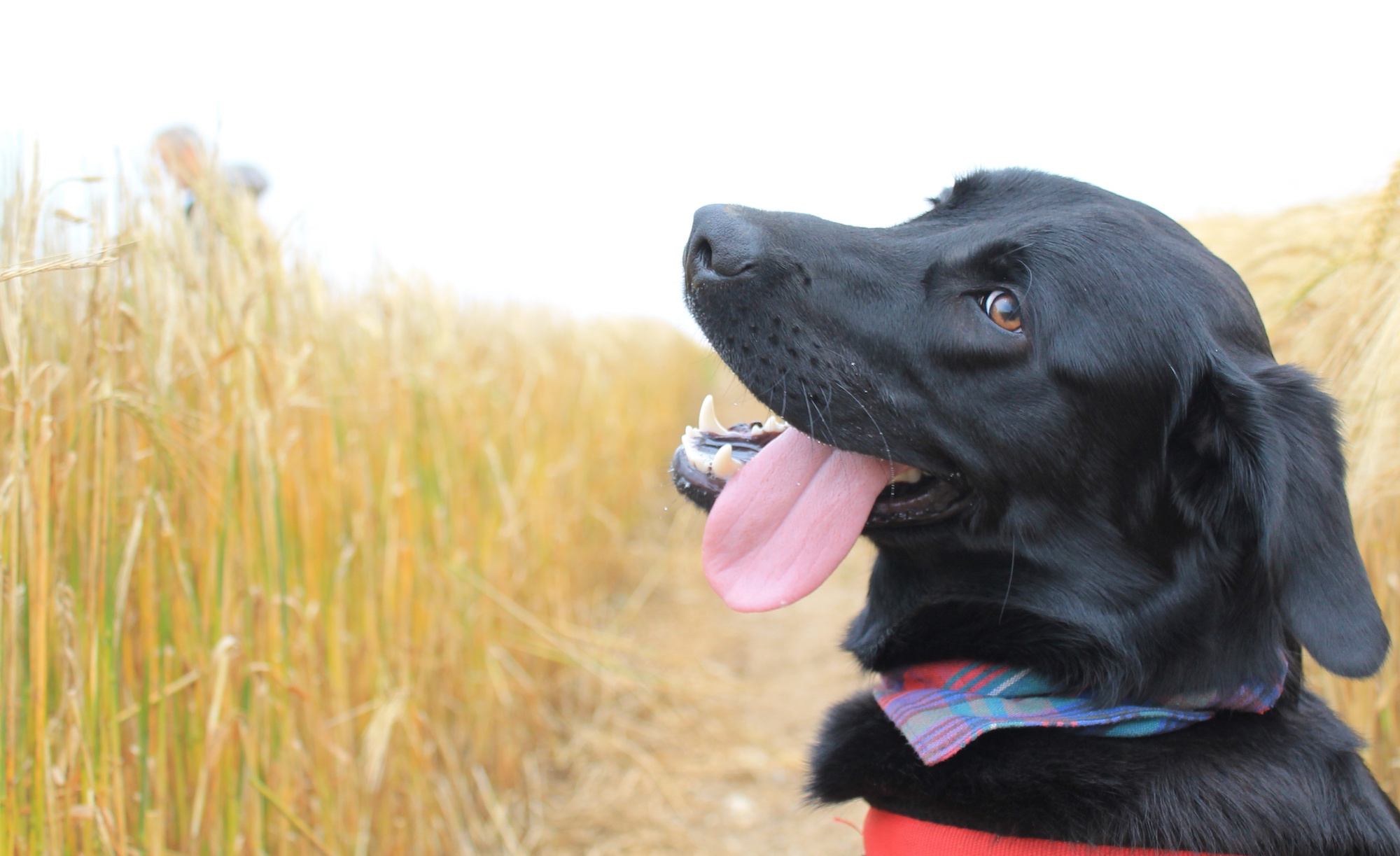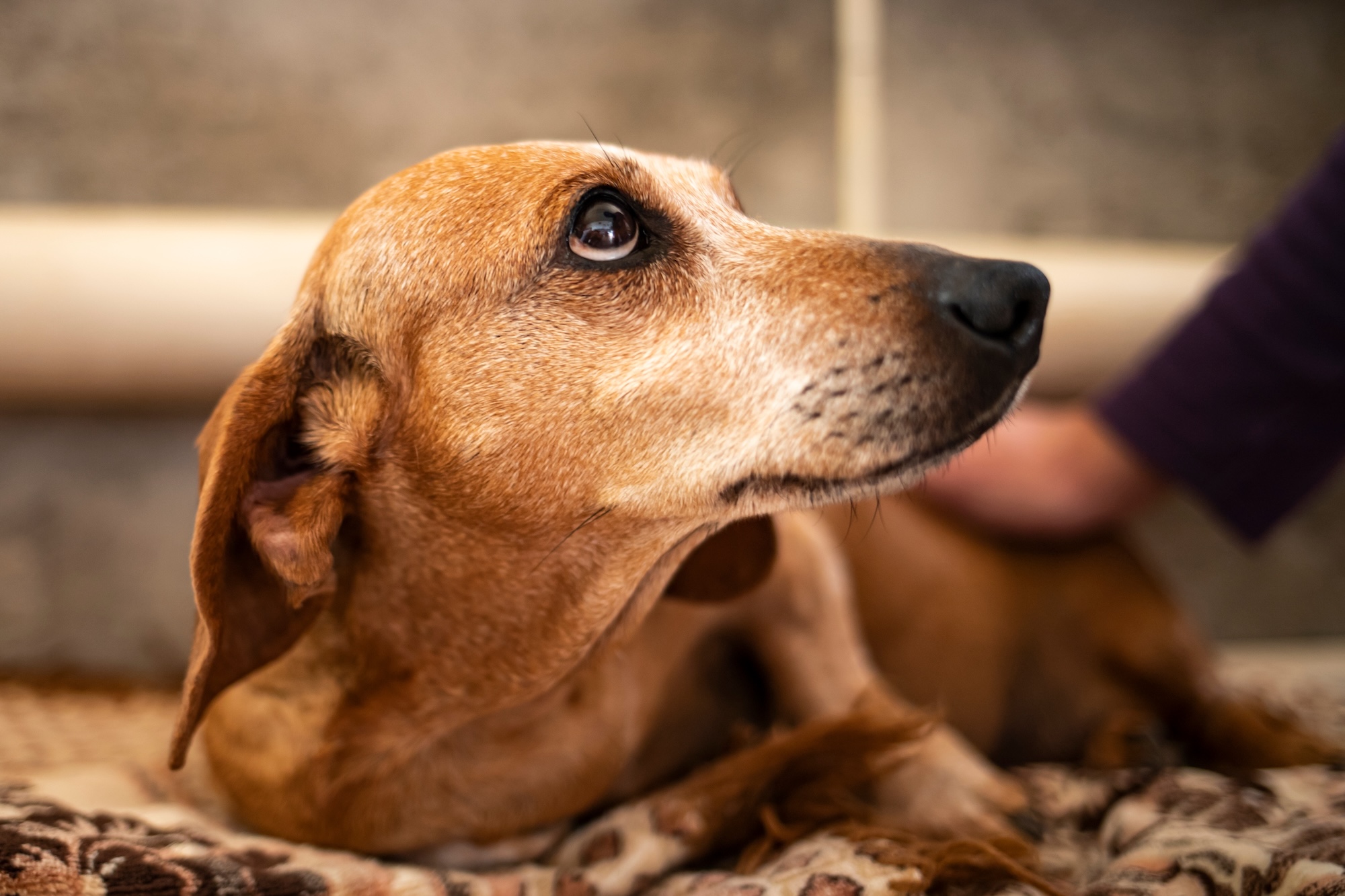Seeing your dog drag their butt across the floor might seem amusing or awkward, depending on the circumstances—but, for your dog, it’s no laughing matter. In fact, if your dog is exhibiting this behavior, they are probably feeling pretty uncomfortable. The most common reason a dog scoots is an issue with their anal glands. Below, you’ll find details on signs of scooting and how to address the behavior’s root causes. As always, if you notice any unexplained changes in your dog’s behavior or apparent health, it’s a good idea to contact your veterinarian.
What is scooting?
Scooting—sliding across the ground in a seated position—is a way that dogs attempt to relieve pain, itching, or other discomfort. You may also notice other signs of issues with your dog’s anal glands, which are a common cause of scooting. These include matted fur in their anal area, licking or biting their rear end, and a foul fishy odor.
How common is scooting?
The causes of scooting can affect all breeds of dogs. Blocked anal glands are more common in dogs that are overweight or frequently have diarrhea.
Common causes of scooting and how to treat them
While most causes of scooting involve the anal glands, reasons for the behavior can range from relatively benign (like irritation from grooming) to potentially life-threatening (such as cancerous tumors).
Anal gland problems
As mentioned above, the little glands located next to your dog’s anus—at the 4 o’clock and 7 o’clock positions—are often the culprits when it comes to scooting. In their normal functioning, these glands release a strong-smelling liquid every time your dog defecates. This scent provides other animals with valuable information, and helps explain why your dog likely has such a strong interest in sniffing other dogs’ behinds and places where they may have gone to the bathroom.
Sometimes, however, these glands become inflamed, and the fluid gets trapped inside. When this happens, said fluid thickens into a paste and causes the glands to swell further. Not only is this painful, but it can also result in more serious issues such as infections and abscesses.
In these circumstances, scooting behavior is your dog’s attempt to relieve the resulting pain and discomfort. More subtle signs that there is a problem with the anal glands include: not wanting to sit down, struggling to defecate, or whimpering and crying out when doing so. You might see bright red blood in your dog’s stool or in spots where they’ve scooted. If the anal glands are to blame, you may also notice a strong fishy odor near your dog’s rear end.
If your dog’s anal sacs seem like they might be clogged, get them to a veterinarian as soon as possible to be examined and, if necessary, treated.
If the scooting is caused by anal gland problems, the vet may manually express your dog’s glands by gently applying pressure to the sacs. This should provide relief. Don’t try to do this yourself—unless your vet has given you the appropriate training—as you can easily damage your dog’s tissue and cause more harm than good. You may have heard that your pup’s anal glands should be expressed regularly, but you shouldn’t proactively do this unless your dog is experiencing problems, or if directed by a vet. Excessive or incorrectly executed expressions can cause problems themselves.
In persistent cases, your dog may require frequent manual expressions or anti-inflammatory medication. If the glands have become infected, a course of antibiotics may be necessary. For some dogs with chronic anal gland problems, a vet may recommend surgery.
Parasites
Parasites like tapeworm, roundworm, whipworm and hookworm are another common cause of scooting in dogs. Your pup could contract a parasite through avenues including sniffing or eating other animals’ excrement, hunting rodents, or eating fleas (which carry tapeworm larvae).
Your dog might scoot if they have tapeworms because when tapeworm egg packets migrate out of a dog’s anus, they can cause perianal irritation (the medical term for an itchy butt). If your dog has worms, you might be able to see tiny white seed-like objects near its anus.
Parasites can be particularly dangerous in puppies; in older dogs, the consequences are often less severe. Nevertheless, worms, which steal the dog’s food and can cause damage to the lining of their gut, can be serious in a dog of any age—especially if they go untreated. If you have reason to suspect that your dog has a parasite, you should bring them to the veterinarian promptly to address the issue.
If your vet thinks that your dog may have a parasite, they will do an examination and possibly use stool samples or blood tests to make a diagnosis. In the event that they do find parasites, they’ll likely prescribe deworming medication.
Allergies
Food allergies or intolerances can also cause scooting. If your dog has a food allergy, the mucus membrane and skin around the anus can become inflamed when the allergen passes through. Again, if you suspect an allergy, talk to your vet about the best course of action.
If the vet suspects allergies to be the cause of the scooting, you will have to change your dog’s diet. It may take some time to determine what is causing the intolerance. With knowledge of your dog’s particular situation, your vet will be able to discuss their treatment options.
Diet
A diet lacking sufficient fiber can cause loose stools that do not exert enough pressure on the anal gland sacs when they pass through the anus. When the fluid is not squeezed out as intended, it can result in inflamed or impacted anal glands. This is one of many reasons you should feed your dog a high-quality, complete and balanced food that meets all of their nutritional needs. A pre-portioned, fresh meal plan in particular may help your dog maintain good bowel habits—fresh food is highly digestible and contributes to high quality poops. If necessary, and in consultation with a vet, you can try adding a fiber supplement like canned pumpkin to your dog’s diet.
General irritation
A visit to the groomer can sometimes result in clipper burns or irritations. Some groomers express dogs’ anal glands as a matter of routine. Not every dog needs their anal glands manually expressed at all—and, if it’s done incorrectly, trying to do so can result in tissue damage that causes the glands to become inflamed. If you suspect that your dog needs their anal glands expressed, it’s safest to let a veterinarian take care of it.
A dog may be irritated by an object stuck in their fur. If that’s the cause of scooting, it’s possible that you’ll be able to spot it by lifting their tail and taking a peek. If there is something there, you can try to remove it by gently washing the area with warm water. But if the cause isn’t obvious, visit your vet.
Your dog may also scoot as a result of irritation around the genitals. If your female dog is scooting, check for knots in the fur around the vulva, skin infections in the vulval folds, or vaginal discharge.
If your dog is itching all over their body, you might need to change grooming products or check for fleas. Warm compresses can help to alleviate irritation due to grooming.
Tumors
Although it is much less common than the culprits listed above, dogs can also scoot due to tumors. The possibility of a serious condition is one big reason that you should consult a vet about any unresolved issues with your dog’s health.
The bottom line
The occasional scoot is nothing to worry about, but if your pooch is scooting regularly—or if there are other signs of anal discomfort—it’s best to make an appointment with the vet so that you can determine the cause and the best course of action. When your dog scoots, they’re giving you a clue that they need help—and it’s up to you to discover why.




